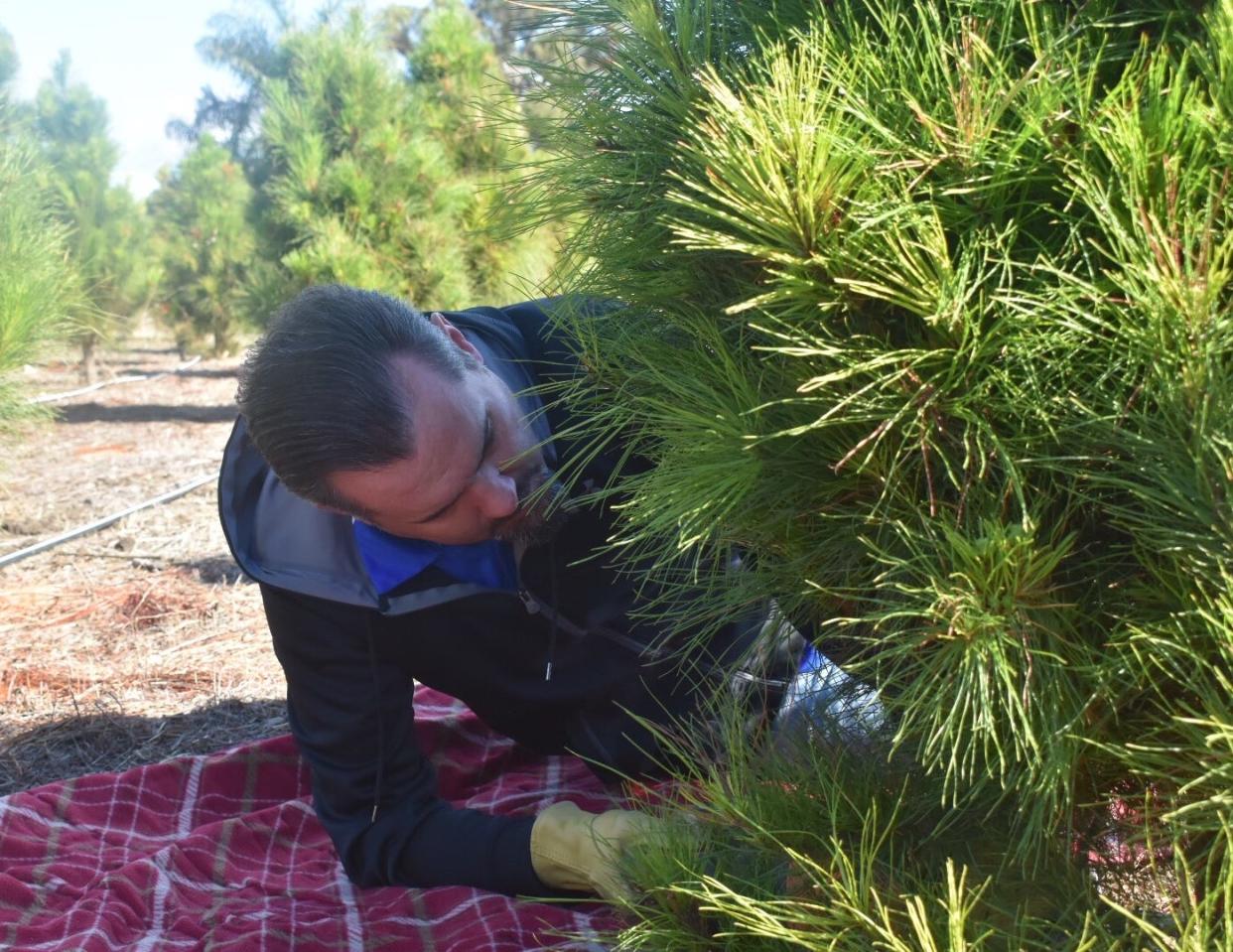Eco-tip: 'Pining' for answers about real vs. artificial Christmas trees

A normally dry and serious website full of tools for calculations has added an alarming but whimsical banner to its page comparing the environmental costs of real Christmas trees to artificial ones.
Amidst peer-reviewed articles written by computational experts with doctorates in physics, a warning says Santa Claus’ home is in danger. “The North Pole is melting!” the website banner shouts, asking readers to “see what you can do to keep Santa’s home cold.”
Quickly reverting to its tone of objectivity and scientific specificity, the Omni Calculator website immediately clarifies in technical terms, “A (Christmas) tree in a landfill will decompose to form CH4, a more potent greenhouse gas than CO2.”
For most people, this citation of molecular structures requires more of an explanation than the website provides. CH4 is methane gas, which is generated when previously living things are buried in the absence of oxygen, such as when a used Christmas tree is buried in a landfill. Since methane is far more potent as a greenhouse gas than is carbon dioxide, the second molecule mentioned, and since world leaders set so many policies and spend so much money to battle carbon dioxide emissions, it makes sense to avoid creating methane gas.
Fortunately, in Ventura County, the alternative to an artificial tree is not a tree destined for a landfill. After Christmas, used trees may be cut apart and recycled along with yard clippings, food scraps and lumber in curbside yard waste carts. Several drop off sites will also be available for businesses and others who do not have curbside yard waste service.
Last year, when the Omni Calculator’s Christmas tree comparison page was first promoted, the calculator had no tab to reflect this reality. As with this year’s page, users could indicate how many miles they must drive to buy a real or an artificial tree, the year of the engine in the vehicle used to make the drive, the size of the tree and other factors. However, the tab for “recycled” reflected an international norm for management of used trees, not the greener reality of Ventura County. Through correspondence with Poland-based Omni Calculator staff, I found “recycled” meant “burned for energy recovery.”
Now, the choices include both “burned for energy” and “used for compost or mulch.” Oddly, another choice is “fed to elephants.” I can only speculate Omni Calculator received input from a very different part of the world when the staff decided to add that option.
So, how green is your Christmas tree?
Inputting numbers I considered typical for Ventura County, the Omni Calculator determined 23 reuses of a Chinese-manufactured artificial tree would be necessary to bring its carbon footprint down to the environmental impact of an Oregon-grown pine tree, such as a Douglas fir. The term “carbon footprint” is still used, even when the primary emissions reduced are not carbon; climate changing gases are typically measured in metric tons of carbon emission equivalents.
The improved figures do not factor in the additional environmental benefits of the compost and mulch produced from a recycled tree. For example, compost and mulch reduce evaporation of moisture from soil, reducing water pumping and further cutting carbon emissions.
Jami Warner, executive director of the American Christmas Tree Association, which represents companies selling artificial trees, responded by email to my notification about Omni Calculator results. She pointed out: “The great part about artificial Christmas trees is that they can also be donated or re-gifted to friends and family ... making it a sustainable choice for those who love to reuse and recycle.”
Warner recommended maintenance to help artificial trees last as long as possible. Use a dense fiber duster or a clean, dry cloth to dust your tree before decorating and before storage. Don't spray soap, vinegar, or other cleaning agents on it. Place the artificial tree in a durable bag when storing and store in a cool, dry location.
Last year, following our email exchange in which Maria Kluziak, the Poland-based lead author of the Omni Calculator’s Christmas tree page agreed to modify the calculator to incorporate mulching and composting of Christmas trees, she asked if I had any other questions or comments. I attempted a joke, which seldom works well across language barriers.
I asked her, “Do you know the ethnicity of Santa Claus?”
After waiting a day without a reply, I sent the answer.
“He is North Polish,” I joked. She did not respond.
David Goldstein, an environmental resource analyst with the Ventura County Public Works Agency, can be reached at 805-658-4312 or david.goldstein@ventura.org.
This article originally appeared on Ventura County Star: Eco-tip: How green is your Christmas tree?

